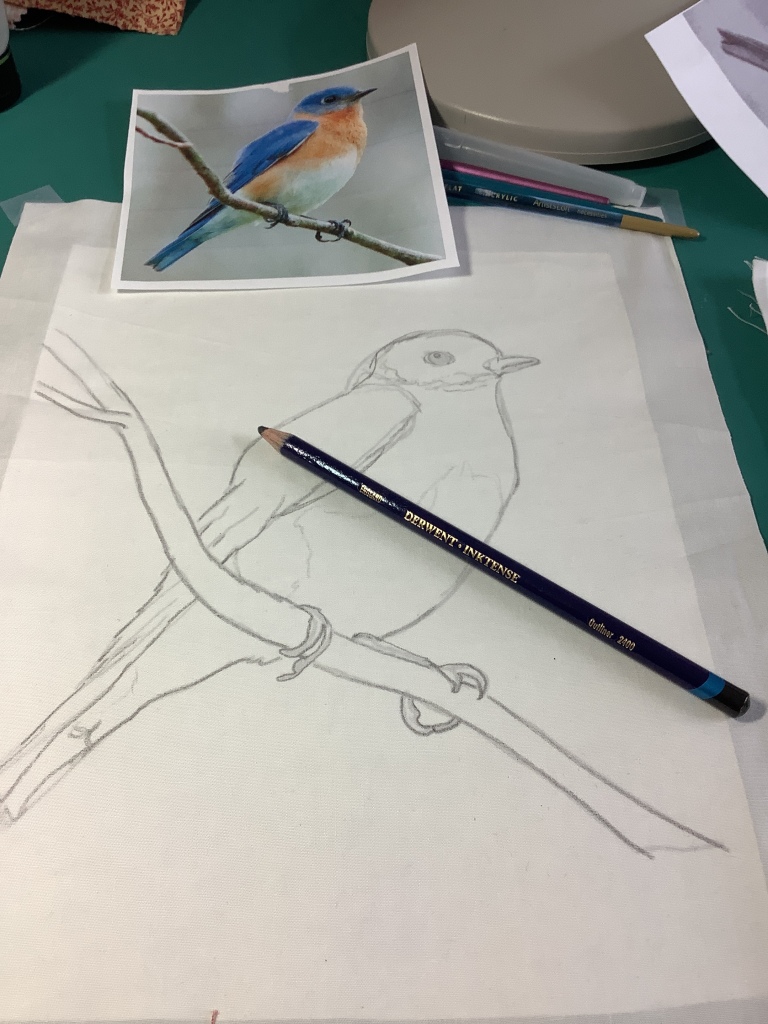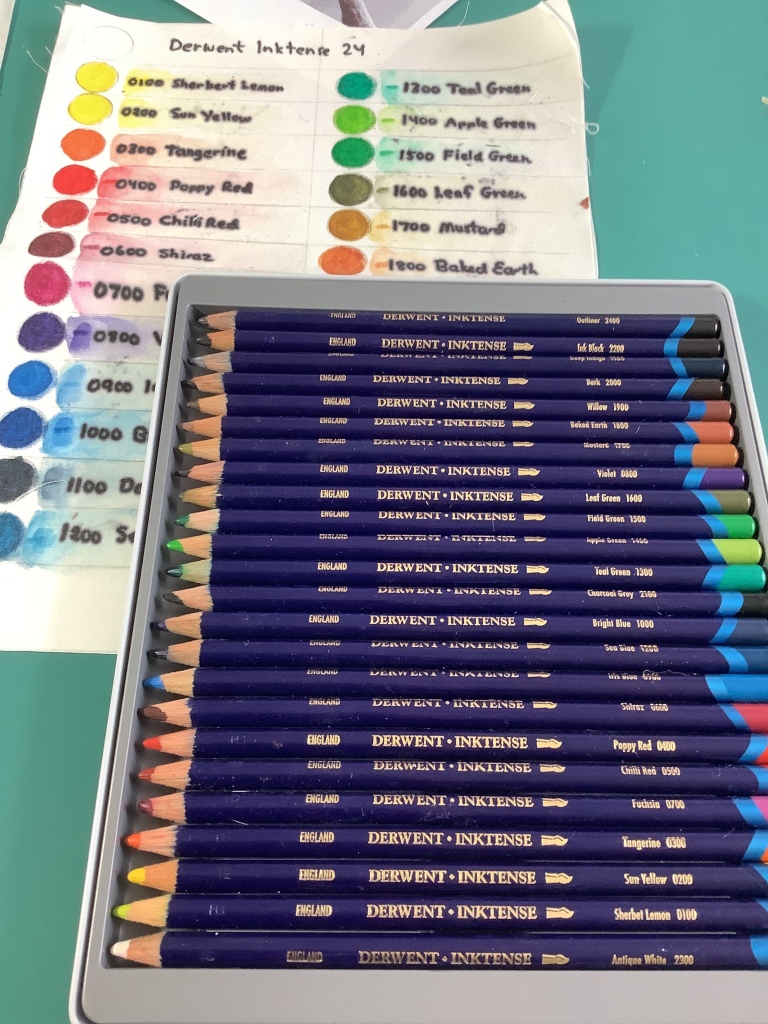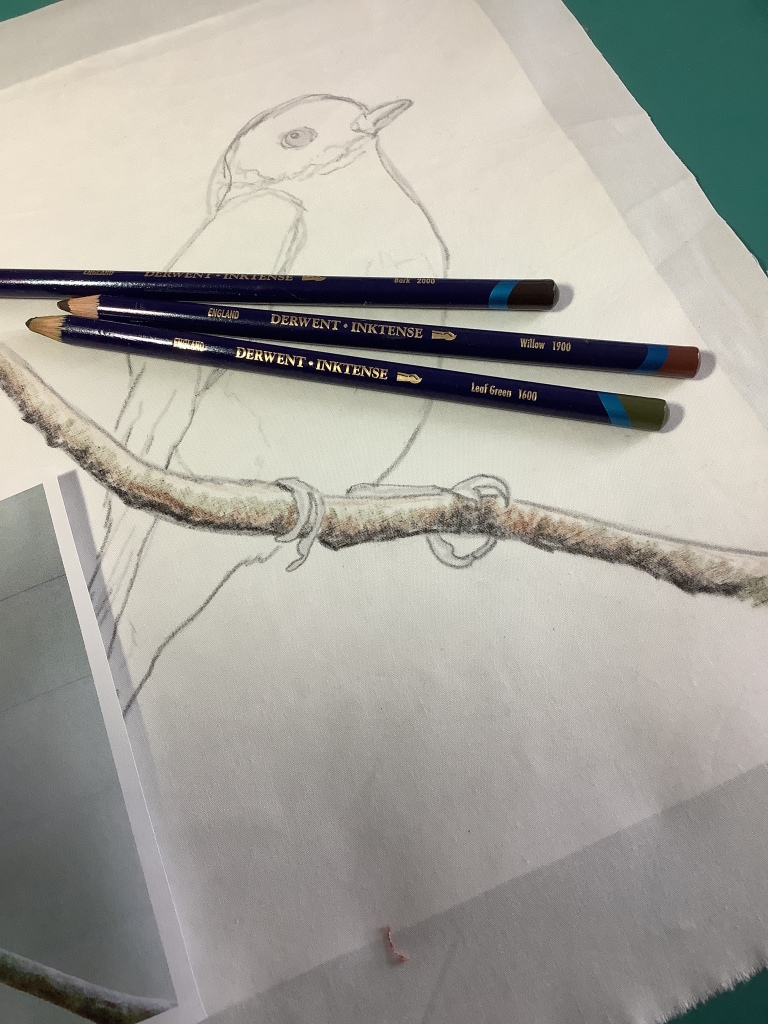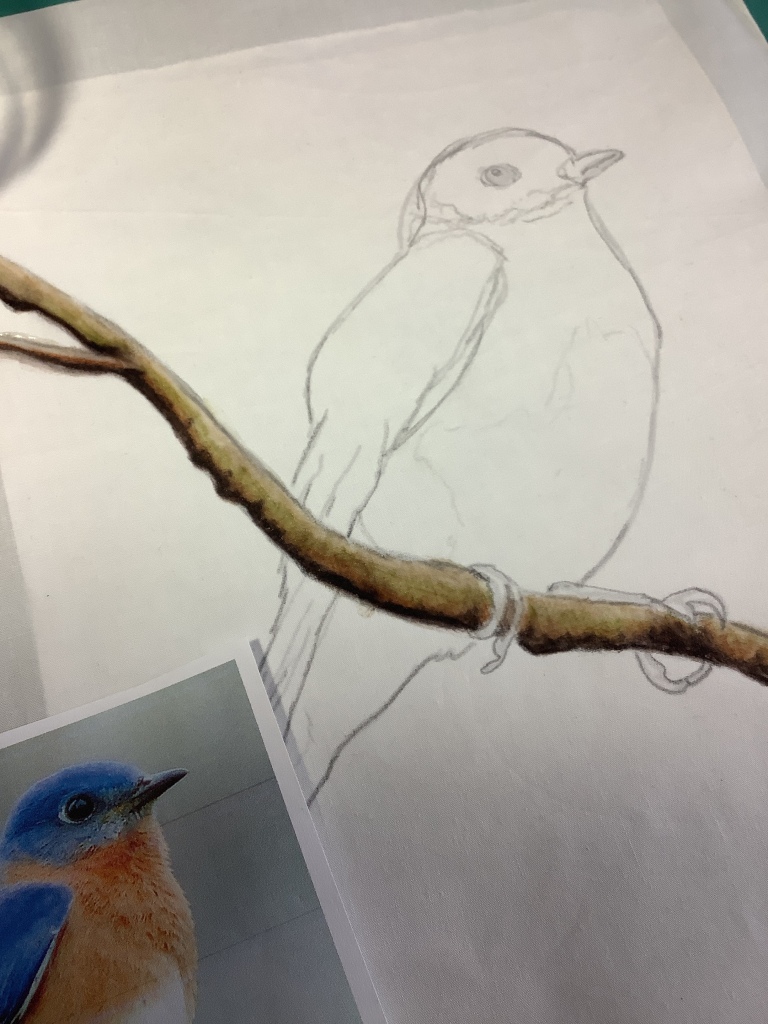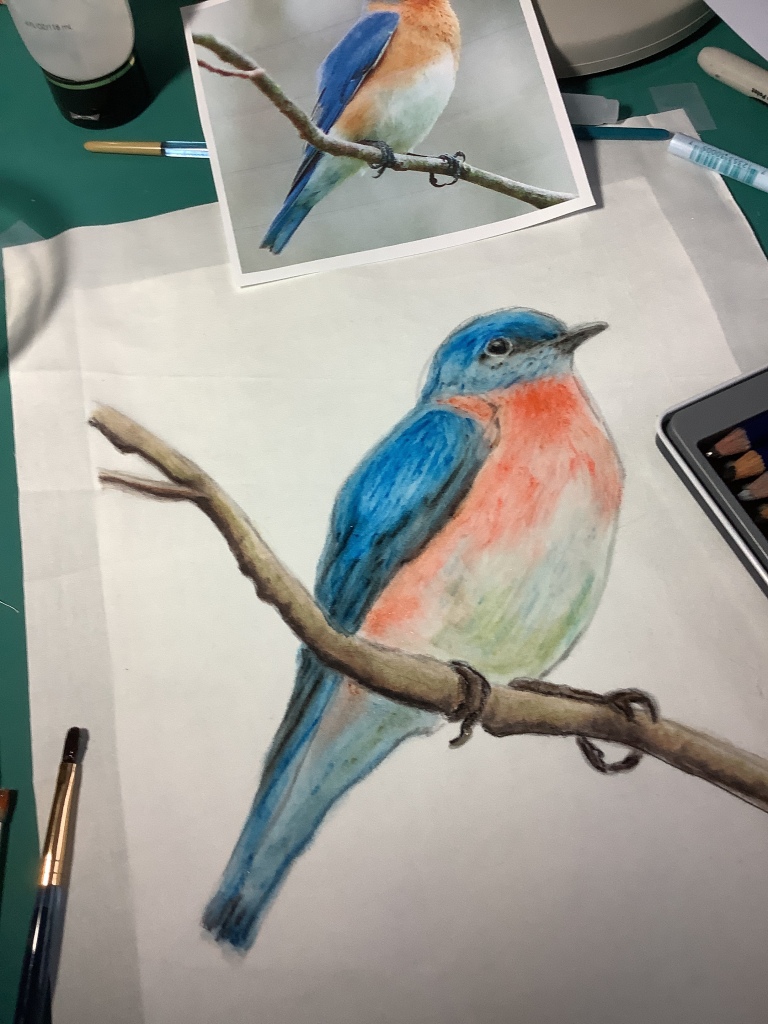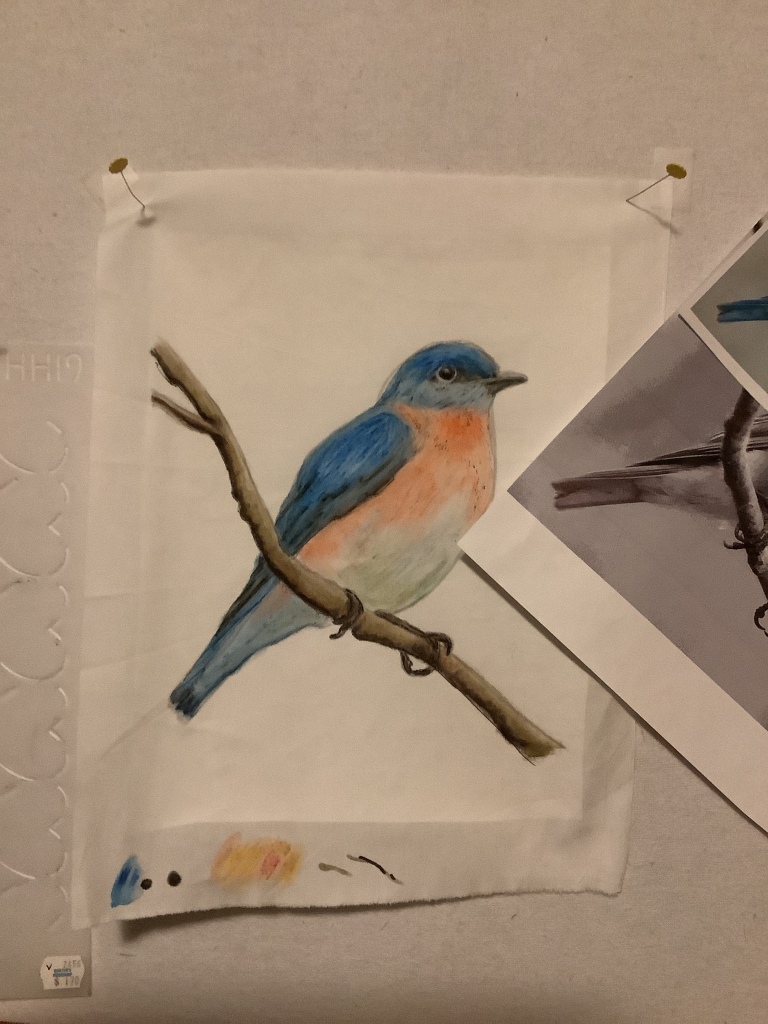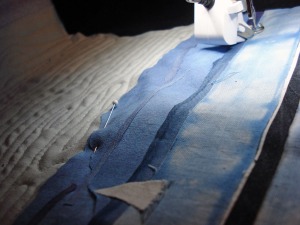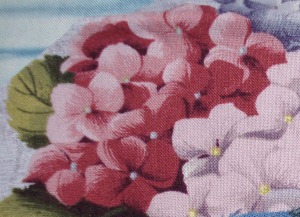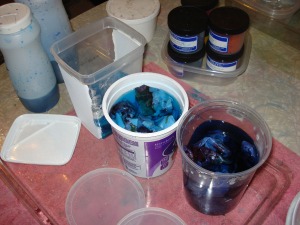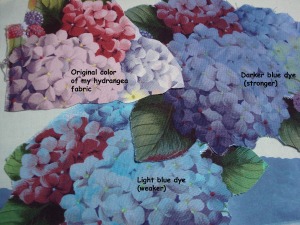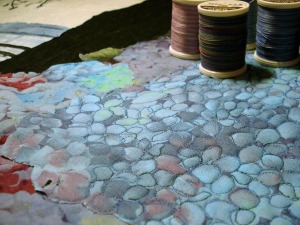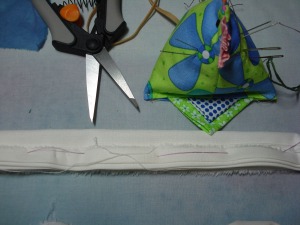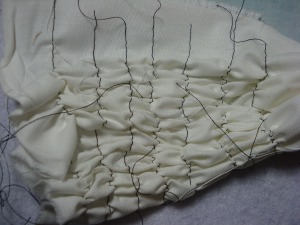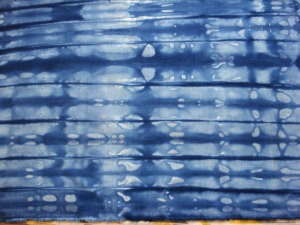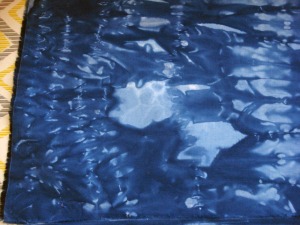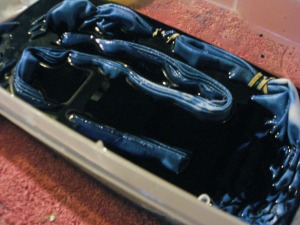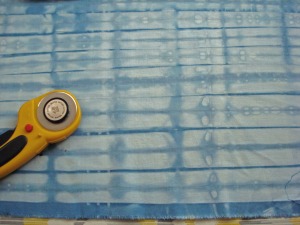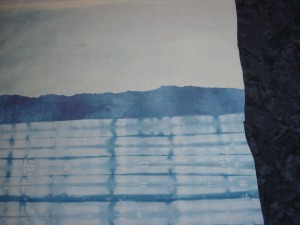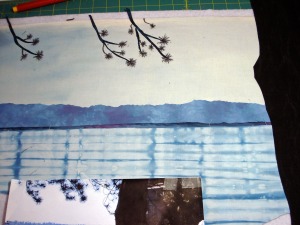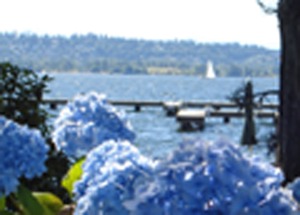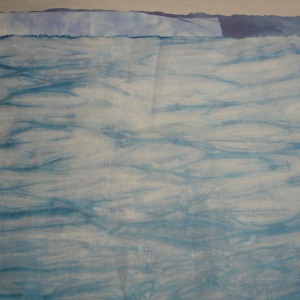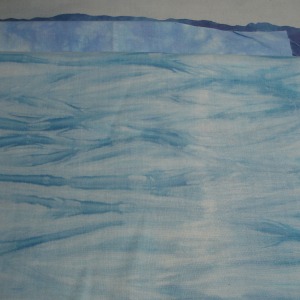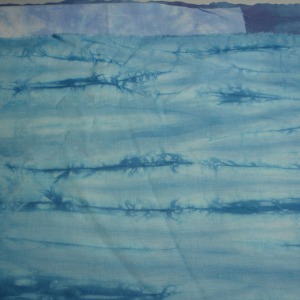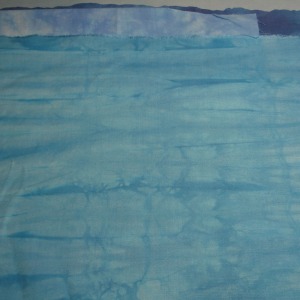I love the process of dyeing fabrics, and have been dyeing cotton fabrics for years using Procion Dye. So a couple years ago when some beautiful scarves caught my eye at a gift shop and I found out that they were made using natural plant materials, I knew I had to find out more.
I immediately searched for a class, and found one at Ohlbrich Gardens here in Madison taught by the talented and informative Shelly Ryan (The Wisconsin Gardener from PBS)–see this link for an even better tutorial! If you get the chance, sign up for a class with her–she’s an amazing person!
We made several scarves that day. I’ve recently gotten back into it, after being asked to teach a little workshop for a few friends. I hope you’ll give it a try as well…here’s how.
First, I purchased 100% silk scarves through Dharma Trading Company made especially for dying. They have many styles and sizes to choose from. The ones I used were “Habati 8mm hand rolled China 100% Silk”. The protein-based silk fiber takes the plant dye beautifully, but is durable enough to stand up to the process.
You’ll also need:
Dye–plant material. You can use everything from flower petals, to leaves and ferns, to weeds; search your kitchen scraps for carrot peelings, red cabbage, onion skins, avacado; or your herbs and spice cabinets for tumeric, cinnamon, tea leaves; or even coffee grounds. The sky’s the limit!
Mordant–to bond the color to the fiber, you’ll need to have on hand either steel wire, copper wire, even a penny will work, or a spray deodorant that contains aluminum.
Acid-based liquid–to release the color from the plants–vinegar (white or cider, doesn’t matter), wine, fruit juice.
Also have on hand some sturdy plastic zip-lock bags (I used freezer quart-size), waterproof bowl or tray, rubber gloves, and a sharpie pen.
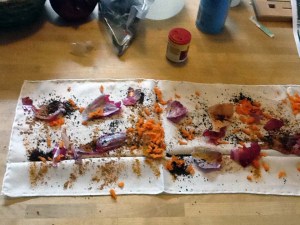
Lay the silk scarf on your work surface with half on the surface and half hanging off. (This is the point where you would spray it lightly with the deodorant before adding plant materials if you’re not using steel or copper.) Layer the plant materials on top of one half of the scarf in any way you choose–you don’t need to worry about covering every square inch–just have fun. There’s no wrong way! Experiment! Use one or two things, or pile on a bunch of different things. My scarf (in photo) had red onion skins, turmeric (spice), cinnamon, coffee grounds, & shredded carrots on it!
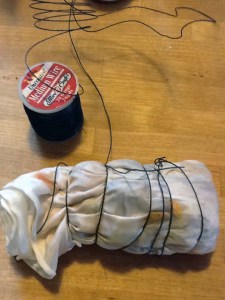
Fold the other half of the scarf on top of first half and from one short end start rolling it; then make it into a ball (or roll again like a cinnamon bun) and secure with the steel or copper wire. (Be sure the steel wire is not galvanized–we want it to “rust”.) If you used the deodorant spray earlier instead or the wire, you can use yarn or string to tie.
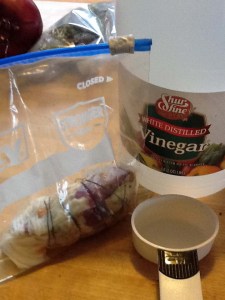
You might want to write on your baggie with the sharpie pen what plant materials you used, in case you’re keeping track. Then place the scarf it in your baggie and add whatever acid-based liquid you want–I chose to use white vinegar, cheap & in my kitchen already. You only need 2-4 tablespoons! Just enough to thoroughly wet it.
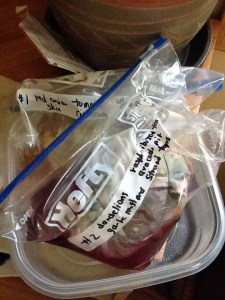
Then close up the baggie and place it in a waterproof bowl or other container–this is just a precaution, in case the bag should leak.
Now the HARD PART…you have to WAIT! Place the baggie away from kids & pets, and out of direct sunlight, and let it sit (cure) from 3 days to up to 2 weeks. I know it’s hard–but it will be worth it. I mark the “reveal” date on my calendar and try not to think about it…
When the “reveal” day is here, put on your plastic gloves (the vinegar might be a bit irritating to your skin) and over a lined wastebasket, or outside in the yard, “pour out” any remaining vinegar & shake out all the plant material. Now take the scarf outside and hang it over a tree branch or bush (or clothesline) and let it dry out for a few hours.
WAIT TIME AGAIN! Now you’ll bring it inside and just let it dry for about 2 weeks. I know, patience is a hard virtue!! But you will be rewarded…
After the two weeks is up you can wash your scarf in warm water (I like to use my sink with a little Woolite or mild detergent) and rinse it thoroughly. Then before it drys completely, iron it with a hot (silk setting) iron to set the color.
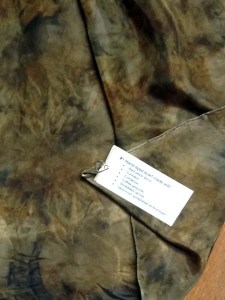
That’s it! You have a beautiful hand-dyed scarf to wear or give as a gift. Here’s how the scarf turned out with the onion skins, etc.
Here are some other examples:
Dandelions, Raspberry Hibiscus Tea Leaves, Strawberry Tops, & the dreaded Garlic Mustard:
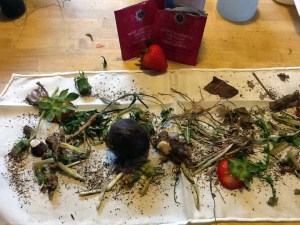
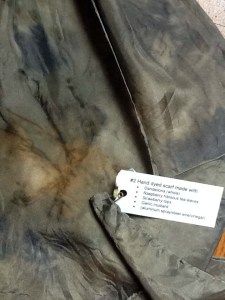
What a great way to commemorate a special event (anniversary, birthday, funeral), by using flowers from a bouquet. My son sent me a dozen light pink roses for Mother’s Day, which unfortunately only last a week or two. So I used the fallen petals in this scarf along with other petals from the garden and some Seattle Chai Tea (because he lives in Seattle)…
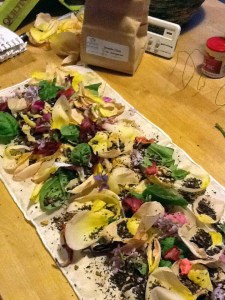
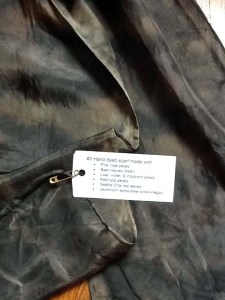
And finally, here’s a scarf made with celery and spinach leaves, oregano and turmeric, coffee grounds, and I threw in a few frozen blueberries just for fun…
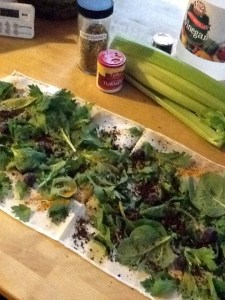
After folding over the second half of the scarf, I smashed it a bit with the flat side of a meat tenderizer just to make the juices come through a little more…
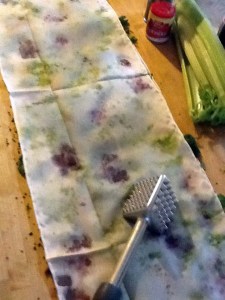
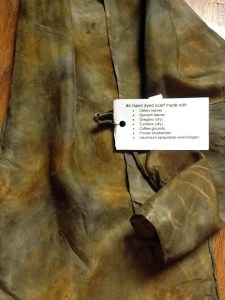
I hope you’ll give dyeing scarves with natural plant materials a try. It’s really a lot of fun. I can’t wait to try other items from my garden and refrigerator–wonder what will happen with avocado? red cabbage? So many plants, so little time! 🙂
For more information, see Lauren Maple on PBS “Sewing with Nancy” segment.

